Best JDM Classic Cars 2025
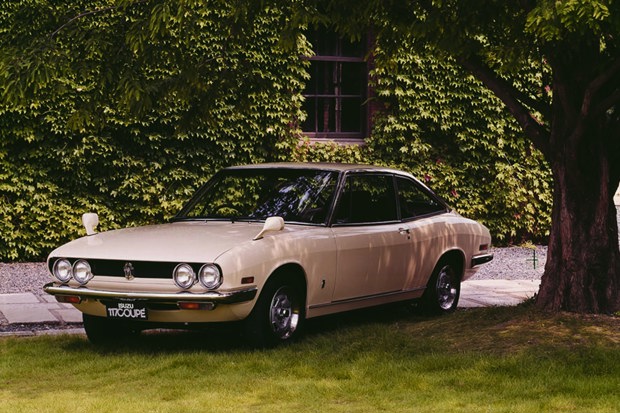
Britain and Japan share a love of cars, particularly expressing your personality through your vehicle. Further uniting enthusiasts is that both nations drive on the left — which means Japanese classic cars are easy to live with in the UK.
Japanese Domestic Market (JDM) models stand out at car shows and events dominated by European models. In the latter half of the 20th century Japan's automakers produced a dazzling array of innovative, unusual and breathtaking cars — while retaining a reputation for dependability and reliability.
While this guide looks at milestones for JDM models, they can be found in the UK. In the 1990s and early 2000s Single Vehicle Approval (SVA) regulations gave a boost to personal imports, which means easy access to unusual vehicles, but a reliance on overseas firms for parts supply. The good news is that mechanically even the most unusual looking models are often based on mundane, easy to buy and maintain running gear.
As with Europe and America, the iconic JDM cars are inevitably rare and expensive to buy in Britain. They may not appreciate in value like a Citroen DS or Aston Martin, but the chances are you won’t see another one on the road, at Goodwood or even on the lawn of a concours d’elegance.
Here are our favourites.
Best JDM classic cars
|
.jpg?width=620)
Subaru 360
You can’t consider a nation’s classic car landscape without including the first steps towards mass mobility. In 1948 Japan introduced the kei class of small, light and low-powered cars to encourage people away from motorbikes. Initially capped at 150cc, in 1955 steps were taken to define a national car and also improve the utility of kei-sized models. Subaru’s debut design, the 360, was built to take advantage of the higher capacity and demand for mass produced, affordable cars.
It was one of Japan's most popular choices, with a rear-mounted, two-cylinder, two-stroke, air-cooled engine and cute bodywork that was smaller and lighter than Volkswagen’s Beetle. Later models could boast over 100PS per tonne — at least before the driver got in. Achieving almost 400,000 sales, the 360 evolved into the compact Subaru Rex hatchback and Sambar small vans.
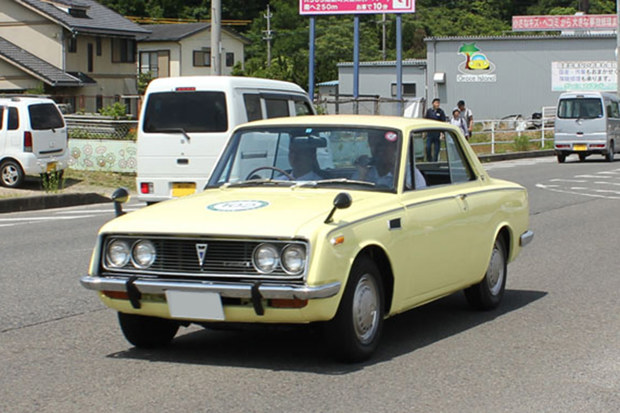
Toyota 1600GT
Ask any moderately car-interested person in the UK to name a Japanese classic car of the 1960s and the Toyota 2000GT will inevitably spring to mind. That limited production, Jaguar E-Type-inspired GT was produced in such small numbers it’s now a million-dollar blue-chip investment. But it has a legacy that is arguably, rarer and more important — the Toyota Corona-based 1600GT.
This delicately-proportioned Ford Escort-sized car boasts twin overhead cams, an optional five-speed gearbox and a limited slip rear differential — plus and an army of descendants including the Celica, the iconic Corolla AE86 Coupe and the Supra.
.jpg?width=620)
Mazda Cosmo Sport 110
Most car companies experimented with Felix Wankel’s take on internal combustion in the 1960s. Now usually referred to as a rotary the Wankel engine wiped-out NSU, the only European brand to take the concept seriously. Most others simply made prototypes or showcases before moving on. Mazda, on the other hand, made it a core product — and made it work. The first rotary-engined Mazda was the Cosmo 110, a beautifully proportioned and generously glazed 1960s sports car that was also the first car in the world with a twin-rotor engine.
It sold in small numbers and is exceptionally rare and expensive now, but was the first step in a line of cars that lead to the twin-turbo RX-7 FD3S and clever four-door coupé RX-8. The Cosmo name was used for subsequent luxury coupés in Japan, before adoring the 1990 Eunos Cosmo — one of the most advanced production cars at the time and the only Mazda production car to use a triple-rotor engine.
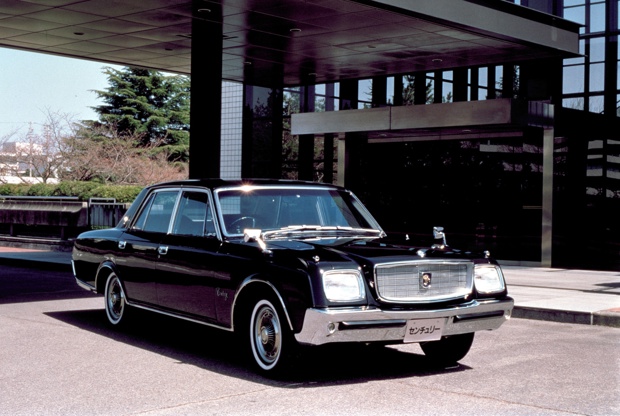
Toyota Century
Japan’s different approach to success and wealth are highlighted by the Toyota Century. Conceived as the pinnacle of Toyota's abilities, it marked 100 years since the birth of company founder Sakichi Toyoda. Wrapping cutting-edge engineering in a subtle, imposing, but not aggressive style, the Century's interior is usually trimmed in wool, with fabric accessories and curtains for privacy. The focus is on rear-seat passenger comfort, though it handles well if needed. The advanced entertainment and technology is hidden out of view, which increases the car's appeal for reserved celebrities, CEOs and members of Japan's royal family.
Starting out with a V8, for its second generation the Toyota Century gained a V12 engine, but remained true to the style of the original despite many technical improvements. The Century remains Japan's only V12 production car and although it remains Toyota’s flagship, somewhat inevitably, the latest iteration is a hybrid SUV. Rather fittingly, Toyota's first hybrid electric prototype in 1975 was a gas-turbine Century.
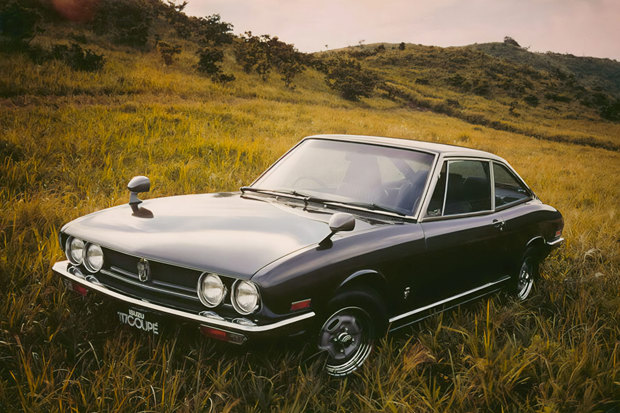
Isuzu 117 Coupe
British drivers even of the right generation probably don’t remember the Isuzu 117, but its Giugiaro-penned lines look very different to the scaled-down American aesthetic of the first Japanese cars to be officially sold on the UK market in the 1960s and 1970s. This rear-wheel drive coupe was revised in 1972 going from hand-built luxury to mass production, with a third facelift in 1977 introducing rectangular lights and a, erm, 2.2-litre diesel.
With over 85,000 produced, the Isuzu 117 Coupe is relatively easy to find and affordable when you. Personal imports have been offered in the UK for less than £10,000. Production ended in 1981, clearing the road for Giugiaro’s next car for the marque which also heralded its arrival here — the Isuzu Piazza. While the legacy of the 117 is short-lived, it highlights the influence of importers and marketing on how British buyers perceived contemporary Japanese imports.
.jpg?width=620)
Nissan Fairlady Z S30 series
The Fairlady name originated with a compact two-seater roadster produced by Datsun, but it's the Z series introduced in 1969 that brought the name to a global audience. While the earlier Datsun Fairladys cars earned a good reputation as competitive small sports cars, the S30 series Fairlady Z 2.0, 240Z, 260Z and 280Z achieved global sales success. The sophisticated straight-six coupes with full independent suspension, plus a 24-valve, twin-cam variant (Z432) using the Skyline GT-R engine, earned international credibility for Japan's sports car industry at a time when many of the models produced were limited runs or commercial failures.
Customer demand and American market success resulted in slightly ungainly evolutions, such as the 2+2 coupe as the 1970s drew to a close. The S30 line ended in 1978 with the introduction of the visually similar, but re-engineered Datsun 280ZX — a less-focused, larger GT with obvious desires on the American market.
The ZX line regained high performance credibility in 1990 with the 300PS, twin-turbo, all-wheel steering Nissan 300ZX Z32, which remained in production until 2000 for Japanese buyers. The Z name returned in 2002 with the Nissan 350Z and continues to this day, though sadly not for UK buyers.
.JPG?width=620)
Toyota Celsior — Lexus LS400
Classic cars don’t have to be sporty, though the Toyota Celsior — sold outside Japan as the Lexus LS400 — is no slouch. The big saloon has all the ingredients for future show credibility — the debut of a significant new brand outside of the JDM world, timeless elegance and impressive engineering. The 1UZ V8 engine is one of the most reliable in the world, though, it's not forgiving of bad repairs. If you’re planning on using your classic as a daily driver, the Celsior’s imposing presence and abilities make progress feel throughly modern. The original Celsior/LS400 was revised in 1995 and again in 1997, with later cars being better equipped and more refined.
What the Lexus represented was a new view of a global economy and market. One that inspired new brands and identities. During the late 1980s and 1990s most Japanese brands experimented with sub-marques and special branches, such as Acura, Autozam, Efini, Eunos, Infiniti and Scion This explosion of confusing identities proved short-lived — but the focus and purpose of Lexus was sound as evidenced by its longevity, arriving in North America in 1989, the UK and Europe the following year but not replacing the Toyota label for those specific models until summer 2005.
This is one Japanese classic car that is easy to find and buy in the UK, and for not much money. As the cars approach their fourth decade on the road, watch for rust, particularly around the rear suspension and sills, accident damage and poor repairs. It’s also worth avoiding bad LPG conversions.
.jpg?width=620)
Toyota Sera
The Toyota Sera was never sold outside of Japan, yet it's relatively well known around the world. More were registered in the UK than some mainstream cars despite the rather dull driving experience. What makes the Sera so special is the futuristic glazed upper half with dihedral butterfly doors just like the McLaren F1. They lift forwards and up, without extending into the adjoining space too far and were suggested as an answer to parking space congestion. They also look cool.
The Sera is an example of another trend in Japanese car design that took off in the late 1980s — the concept of the boutique car. It's unusual in that it was sold long enough for three revisions to be made and over 15,000 were produced, yet it sits alongside the Nissan Pike Factory cars — the Be-1, Figaro, Pao and S-Cargo van as examples of short-run, targeted models to capture niche markets.
As with that group of Nissans, the Sera's underpinnings are taken straight from the cheapest production models. Revealed as the AVX-II concept in 1989, the Sera launched in 1990 with slim projector headlights and a 110PS 1.5-litre engine that makes the compact, low coupe sprightly rather than fast. It's an affordable and distinctive Japanese classic car that's relatively easy to find in the UK.
.jpg?width=620)
Honda NSX
Japan's automakers created sports cars like any other nation, but Honda's NSX was that nation's answer to the Ferrari 348, the Lotus Esprit and Chevrolet's Corvette in terms of global recognition as well as technology. A mid-engined V6 performance coupe that broke new ground by using an aluminium monocoque to save weight and gain strength, the NSX represents the very best of Honda's engineering in the 1980s and 1990s. From the 270PS 3.0-litre, VTEC equipped engine, to the F1-developed chassis that Ayrton Senna helped tune, the NSX was never considered perfect and was constantly improved during production.
There is no doubting the competence and quality of the Honda NSX — but it was once an 'affordable' supercar, but that's no longer the case with UK prices well into six figures. There are also NSX-T Targa-style top, track-focused NSX-R and later 3.2-litre models to look for, but the purest is the early five-speed without power steering.
Honda used the NSX construction techniques to create the lightweight Insight hybrid and was inspired to launch another sports car — the S2000 — but the NSX was not directly replaced when production ended in 2005. A new Honda NSX launched in 2016, as a reboot of the concept with hybrid power, but never matched the success or critical acclaim of the original.
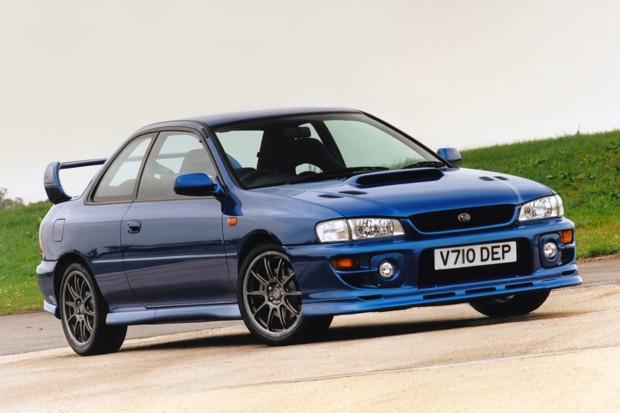
Subaru Impreza WRX
Take a bunch of British millennials or Gen-Xers, car-obsessed or otherwise, and play a soundtrack of ‘Japanese Classic Cars’ and you’ll probably find that one car is recognised across the board — the ‘Scooby’. Originally a thoroughly sensible small saloon or estate with front- or four-wheel drive, the Subaru Impreza was transformed into a thing of legend by Prodrive, the World Rally Championship, Colin McRae — driving the WRX versions into the hearts and minds of young drivers as the flat-four burble echoed through towns and cities.
The perfect family car for the ASBO-era, the WRX — officially sold here as the Subaru Impreza 2000 Turbo in its first generation — drew attention to the potential of Japanese Imports to get the most special JDM variants, spawning a series of ever more powerful successors — all riding on that rallying success. It's a rare car now and many have succumbed to rust or surprise hedges — the best survivors can command strong five-figure prices at auction.
The Impreza survived, with the Subaru WRX retaining much of the old-school style and attitude until 2019, even after the mainsteam version had evolved into a rather dull hatchback. Subaru's UK presence has dwindled as SUVs claimed its traditional all-wheel-drive market, but globally the brand remains strong — and rumours of a new WRX never seem far away.
How to buy a Japanese Classic Car
The market for Japanese classic cars, even the blue-chip 1960s legends, is relatively suppressed in the UK. The obvious models that have reached the mainstream mindset are generally high-performance imports, with more obscure and charming cars such as the Subaru 360, Honda City or Toyota Corona being more of an enthusiasts-only market — and a small one at that.
That's good news if you're looking at a car at auction and already in the country, as there's unlikely to be strong competition. Choose 1960s and 1970s family cars and you'll get something generally more sophisticated and easy to live with than contemporary European models.
Japan has a strong network of international sellers and shipping, so personal importation is always an option. Finding the right car might involve a trip out there yourself, or employing a broker and researching models very carefully. With some cars, trim and model designation are everything, so don't get carried away by seeing Corolla GT and end up with a front-wheel drive hatch instead of the angular rear-wheel drive AE86 you pictured.
For some models it may be worth looking at Australian personal imports as well. The shipping costs are considerably higher, but there's a lot of availability, particularly for restoration projects, often with usable rust-free shells and body parts.
On older models, trim and bodywork are key — most mechanical parts are easy to repair. Moving into the late 1980s the technology can be the biggest challenge for full restoration.
Rust and repairs — a unique challenge
Most cars supplied from Japan will have good and accurate descriptions if sourced at auction. Northern regions do get snow and as a large island, coastal rust is also a concern. UK market Japanese cars of the 1970s and 1980s — and even into the 2010s — are capable of rusting like British Leyland's finest.
Complex pressings, light steel and the cost of importing repair panels can make restoring a 1980s Japanese classic a real labour of love, so it is worth buying and preserving that Honda Accord Aerodeck or Nissan 100NX now, before it really is the last one left.
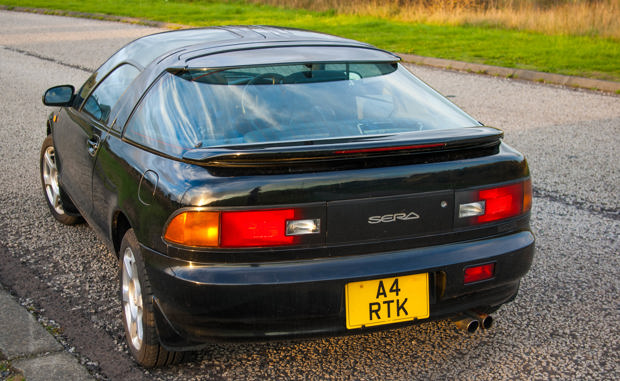
Parts availability and costs for JDM classics
Most Japanese manufacturers keep parts in stock for much longer than their European equivalents. Until recently it was possible to walk into a Toyota dealer and order parts for a Sera over the counter, shipped from Europe — more than ten years after the last model was produced. Try that with a Peugeot, Citroen or Renault.
Remanufactured parts are harder to get but it seems likely that the same classic parts or 3D printed bespoke orders exist, they just aren't easy to find. Join a specialist forum with global membership to see the widest availability.
Routine parts can be ordered from sites such as Amayama, which hosts parts catalogues and pricing and arranges shipping for you from Japan or Australia. There's a lot of interchangeability between models and Amayama's site will show you all the vehicles a part was used on, which can help with tracking down second hand components.
